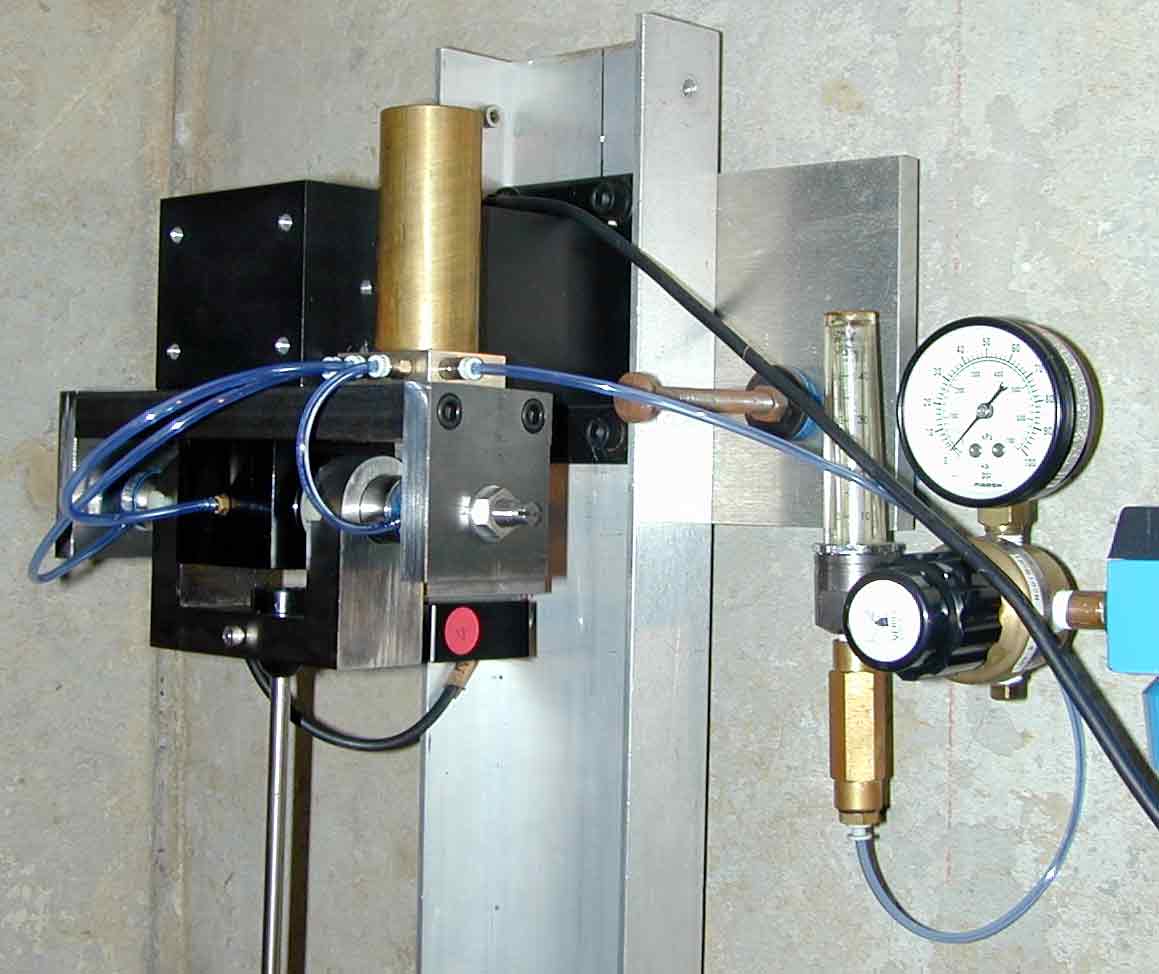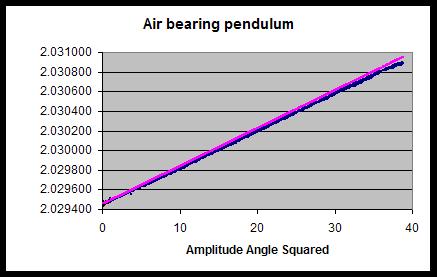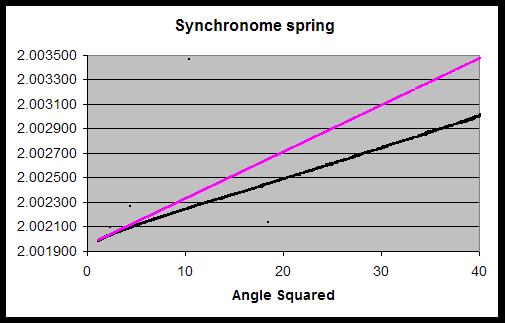Air Bearing Clock #2
This experimental clock was constructed to continue the investigation into the practicality of supporting a pendulum from an air bearing. The air bearings that support this pendulum are off the shelf items from New Way Bearings. The main components are a 1" diameter air bearing mounted in a pillow block, two 1" diameter pad bearings, and a 1" diameter shaft.

An invar fork was machined to connect the single pendulum rod with the air bearing shaft on either side of the pillow block. Axial motion of the shaft through the bushing is controlled by porous air bearing pads at each end of the shaft. The single rod configuration makes the clock more similar to spring and knife edge supported pendulums so that comparisons can be more easily made. The image at the right shows the air bearing suspension. The black object with the red dot is a laser distance sensor for amplitude measurements.
The clock is installed on a 10" thick poured concrete wall in my basement. The aluminum channel and the upper cross bar are attached to the wall with 3/8" expansion bolts that pass through isodamp (no bounce) rubber pads. The air bearing (bushing) is attached to the black anodized aluminum beam at the top of the channel.
The pendulum bob is a 3" dia by 8" tall steel cylinder from a Synchronome clock. The bob weighs approximately 13.5 lbs. A MicroSet sensor is mounted on an adjustable support in order to make measurements of period and amplitude.
Preliminary measurements have been made to evaluate the quality of the air bearing suspension. The two graphs below show the period plotted as a function of the square of the amplitude. Data (black) and theory (magenta) is plotted for the air bearing pendulum and for comparison the same pendulum suspended from a spring suspension.


Note: Plotting versus amplitude squared makes extrapolating the data to zero amplitude much simpler than the traditional form of plot. The idea was suggested by Stroud and Matthews, Period of a rigid pendulum pivoting on flattened knife edges, Physics Education, Volume 22 (1987) pages 170 - 173.
